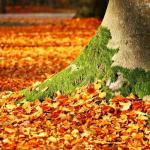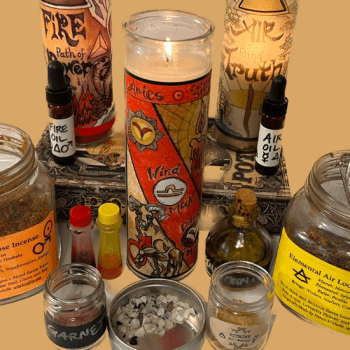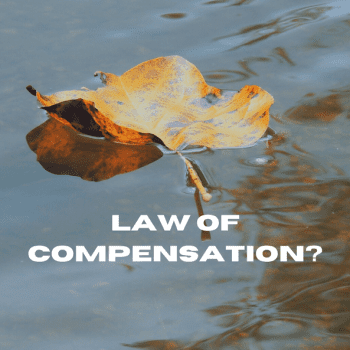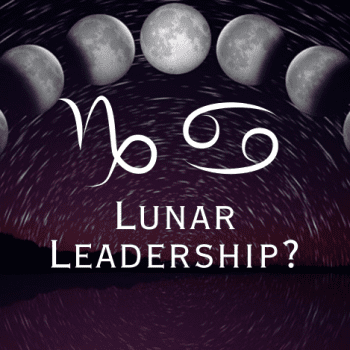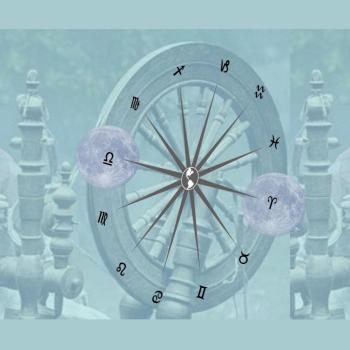Our coven just held the first Eldering ritual for one of our founders. It was my privilege to co-officiate this Rite of Passage, and I look forward to honoring many more elders in the future. As the Pagan and Witching communities grow in wisdom and accomplishment, Eldering Rites become a vital sacred task. We share our ritual in hopes that it will inspire the diverse traditions of Pagandom to develop their own.
Creating a New Tradition
Having never even witnessed such a ceremony in any other tradition, a few of our coven members took it upon themselves to create our own. They researched, divined, communed with Deity in meditation, and then creatively contributed their talents to make something special.
She says, “As I helped plan the first ever Croning/Eldering ceremony for the coven I knew I didn’t want it to be a big high ceremonial type of thing. I just wanted it to be a recognition of this new stage of my life. I had already done much of the internal work, the spiritual work, on my own during the preceding years of my 50s, and just wanted to create the Eldering ceremony legacy for the coven to build upon, leaving plenty of flexibility for such future ceremonies to suit particular individuals.”
Creating Rites of Passage for the emerging magickal communities raises important questions. Establishing a new framework through which we process our lives demands deep consideration of what it means to live a meaningful pagan life. We have to start by asking what our neo-pagan society values.
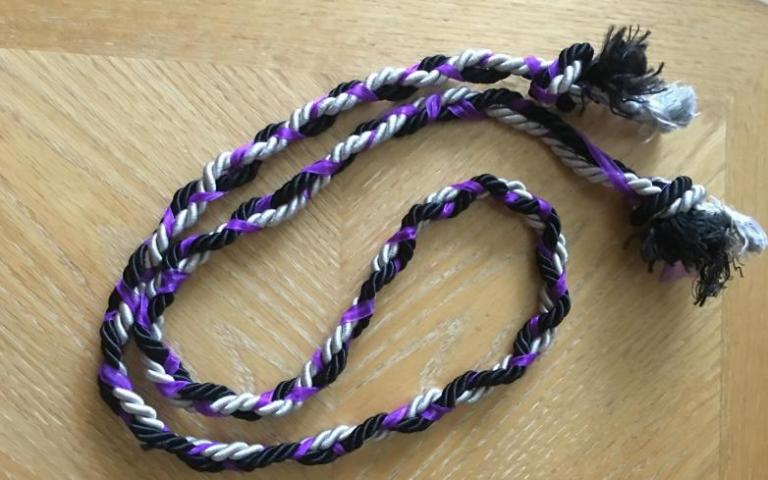
Rites of Passage in the Witching Community
When our coven formed officially, we made it part of our mission statement that we would facilitate Rites of Passage for our members and their families. Honoring these milestones along life’s path may be the most important function of “religion” in our society.
We outline Pagan Rites of Passage as such:
- Wiccanings for welcoming new babies to the world. Here is an example of our first coven wiccaning.
- Adulthood rites to welcome teenagers to the ranks of adults. Also called “Coming of Age.” This is a good gender-neutral term, but can also be broken down further into Maidenhood or Manhood rites, depending on gender identity and preference. We aim to hold these after the 13th birthday, after physical entry into puberty. For females, after the onset of menses. For males, some recognize the voice deepening as a physical milestone.
- Hand-fastings for bonding two people in partnership. Also known as “Marriage.” Here is an example of a handfasting I officiated.
- Hand-partings for severing the bonds of partnership. Also known as “Divorce.”
- Motherhood and Fatherhood Rites to honor new parents for the birth of a child. Potentially at first saturn return, should a person choose not to have children.
- Eldering Rites: Elder may be chosen as a gender-neutral term; Crone may be chosen by women; Sage may be chosen by men. Usually held for women after the completion of menopause.
- Funerals for honoring someone’s life and legacy, upon their physical death. I’ve written on the funeral rite I’d prefer, and a pagan funeral song that reflects that process from a pagan point of view.
Typically, there is a giant gap between “parenthood” and “funeral.” Blatant fear of “getting old” is a big part of society’s problem. This has not served us well at all, and paganism is working hard to correct that, deciding that we VALUE the wisdom of age. Therefore, it makes perfect sense that we would also commemorate that passage into elderhood with the same vigor as we celebrate a new baby.
What qualifies someone as a Pagan Elder?
Community respect:
First of all, I’d say that if a coven of long-practicing Witches already consider someone to be an Elder among them, it is a good first qualifier. Regardless of what that person thinks they are, having the respect and support of your community is pretty important.
Second Saturn Return:
Astrologically, this occurs between the ages of 58-60. This is the second lap of Saturn around the Sun, crossing through the same house it was in at the time of your birth. Your first Saturn return (28-30 years old) heralds your entry into spiritually-mature adulthood. The second one heralds your entry into Elderhood. Here is a good resource.
No longer actively parenting their own children:
Not to say that one couldn’t be actively GRANDparenting, but there is a societal milestone of having successfully launched a generation into their own independence that shouldn’t be undervalued. Active parenthood of your “own” kids has a “phase” that comes with its own titles and rites. Best to wait for Eldering until the demands of parenthood shift.
Retirement:
This is a tricky one, because some folks have the sort of jobs that one may never stop doing until the day they die. Others have the types of careers, where at some point they either *must* pass the torch to the next generation – perhaps because of their physical demands – or *choose* to retire from the day-to-day grind, to slow down a bit and pursue more personal endeavors. I think the key consideration here is this: Did you accomplish some sort of legacy with your life’s work, that you now feel is complete enough for you to pass the baton to those you’ve mentored into leadership? Have you stepped into a more advisory role? Again, the “active work” phase has its own time.
Menopause:
This is an easy one for women. In the physical world, to be a female mammal is much about cycles of fertility. We welcome a girl to Maidenhood at the onset of menstruation. Motherhood is honored with the birth of a child, or her first Saturn return, should she not choose to have children. Cronehood would therefore be honored after the completion of menopause, when fertile cycles cease.
All these parameters for “Eldering” should be considered uniquely for each individual, because biology loves diversity, and physical fertility and spiritual maturity don’t always sync. There are many modes of being and attainment. Like any initiatory experience, you’ll know when you are ready. Beyond that, if your community is on-board in honoring that achievement, the time is right.
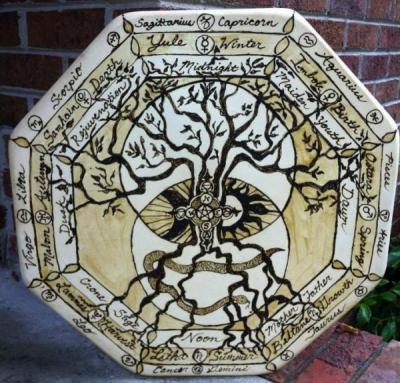
Timing of an Eldering Rite
In our tradition of Modern Witchcraft, we look to the west/north-west to align with the elder phase of life. The elements of water and earth would be key. On the monthly cycle, all this corresponds to the New Moon and Crone Goddess. Samhain, the Grand-sabbat at the midpoint of autumn, is when we honor the Sage God/Dark Lord of Death as they descend to the underworld. Samhain is the midpoint of Scorpio – the sign of death, the occult, psychic insights, and all mysteries of the veil between.
Therefore, an eldering rite would be especially powerful sometime between Mabon and Samhain, on a New Moon, after sunset, but before midnight. All that said, our group chooses to hold Elderings at our Grand Sabbat of Samhain, because we are already camping out and its like a big homecoming. This year it happened to fall on the full moon in Scorpio, four days before astrological Samhain, and it felt like a perfect time.
Eldering Rite of Passage
I’ve been given permission by our Elder and Epona Petra to share this ritual they’ve developed, in hopes that it will inspire similar celebrations in your own communities.
Altar:
- Position of altar is in the Western edge of the circle.
- Fire burning at the center of circle
- Chair set for Elder near the fire (A rocking chair would be so perfect.)
- Black cloth covering
- Silver candle for goddess and picture of Grandmother Spider
- Gold for God and picture of Janus
- Purple Candle dressed for Croning or Saging
- Sage bundle for smudging
- Sage leaves scattered on altar and on ground in front of it
- Cauldron with water
- Sodalite and Apache Tear stones
- Package of perennial flower bulbs to be planted in the fall, for flowering in the spring. We chose Alium flowers, for their deep purple color, and the spherical shape, which was indicative of the completion of cycles.
- Eldering Cords: A braid of black, silver and purple cords to be worn around the waist as a belt on ritual robes, or draped around the neck like a stole.
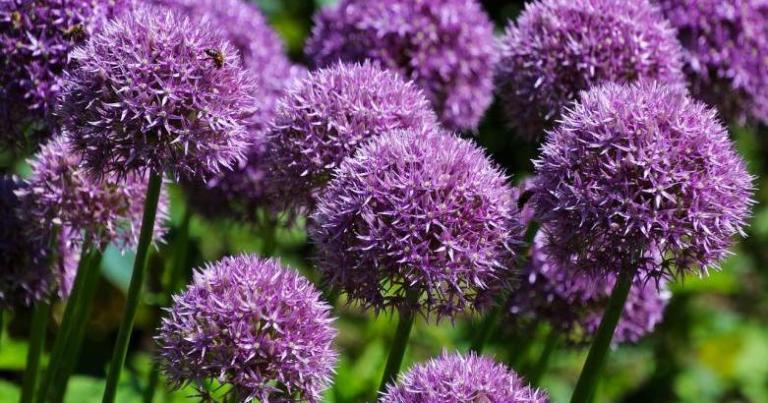
Create the Temple
The Coveners entered to the beat of the drum, through the Eastern Gate of our sacred space under the clear and starry night, the weekend of Samhain and on the night of the full moon in Scorpio. We formed a circle in the fire-light. Our eldering candidate was the last to enter, passing through to stand near the altar in the West. We then consecrated the space by passing around deosil the incense, fire candle, water and salt. Each stating “Welcome (element)” as we wafted or sprinkled each. We cast circle by our linking of hands and chanting to reach a cone of power, then opened the gateways above, below and cardinal points, forming the cross-roads, as we typically would do for an esbat ritual.
Statement of intent:
Priestess: As the sun sets, and the earth turns, we pass through stages of life. Honored among these is Eldering- whereby a person is recognized for a coming of age and wisdom.
Priest: An elder is a teacher: they have experience to share.
Priestess: An elder is a mentor: they can help guide others.
Priest: An elder is a storyteller: they can tell stories to entertain and teach.
Priestess: An elder is a guardian of traditions; one who passes down customs that might otherwise be lost.
Priest: It is our intention today to recognize (name) as an elder within our community. It is our belief that their guidance is a benefit to the collective growth of our tradition, and we take joy in learning from their wisdom. We now welcome (name) to take this time in sacred space to call upon her own guides, as we each bear witness, with love and support.
Our eldering candidate then availed herself of the consecrated altar in whatever personal way she saw fit to do, calling upon her personal Deities in a heartfelt prayer, speaking her gratitude for specific lessons and memories of their guidance and inspiration in her life. She called upon particular guides and loved ones in Spirit. As she called them, she lit their candles.
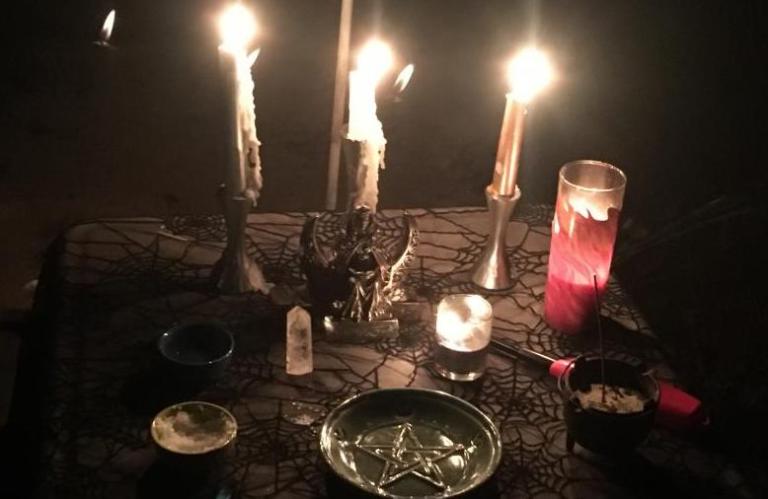
Story time:
Then we took a seat, enjoying the “campfire story” setting. She shared tales of her spiritual journey since the religion of her childhood, her growth into witchcraft, and shared wisdom teachings from her own experience with us all.
She spoke of the sacred mission she’d worked long through her life to accomplish, and claimed her accomplishments with pride, as she should. “…learning to love and accept myself as a single, divorced mom of a teenaged son, enjoying the freedom of having my only child raised and successfully launched into adulthood and on his own, finishing graduate school, completing a doctoral level masters thesis on the spiritual development of college students, growing the local interfaith movement in my community and establishing a similar initiative on the campus of the public university where I worked for 30 years in student activities/affairs, and helping the Sojo Coven grow in size, stature, influence, and organization.”
She then stated what further work she intended yet to do in her role as Elder.
Blessings and Legacy
Priestess: Now that she has given to us, we ask the blessing of the Gods for her Eldering.
Elder approaches altar: Smudges self with sage. Lights purple candle. Anoints self with water, asking for the powers of acceptance and daring. Kneels and makes private or public communication with the gods, as he/she sees fit. Turns to face group when he/she is finished.
Priest: (Name of Elder,) As an Elder what would you like your legacy to tour community to be? (Elder answers)
Priestess: (Name of Elder,) what would you like to take with you from today as you move through the mundane world? (Elder answers)
Presentation of Elders Cords and Gifts
Priestess places the Elder cords of purple, silver and black around here neck like a stole.
The bag of flower bulbs is presented as a magickal reminder that what is planted in the autumn of decline, emerges as great beauty in the next cycle of spring growth.
All the coven members are then invited to offer the elder words of blessing and gratitude, along with any token gifts. I presented her with a polished labradorite palm stone, which has always carried Crone Goddess energies, and aids in psychic insights. We each spoke of our memories of the things the Elder taught us.
Power-Raising Chant written by Epona Petra
Elder stands in the middle of the circle, and the coven circles him/her 3X and sings:
Elder ours, wise crone or sage,
We join you now in turn of page.
We celebrate the eldering
With song and dance. For you we sing!Elder ours, please teach and guide
We need your wisdom at our side.
Mentor those with much to ask
To share the work of learning tasks.Elder ours, wise crone or sage,
We join you now in turn of page.
We celebrate the eldering
With song and dance. For you we sing!Elder ours, please stories tell
Of things in life you know so well.
Joy and pain, gladness and sorrow
Your passage through helps us tomorrow.Elder ours, wise crone or sage,
We join you now in turn of page.
We celebrate the eldering
With song and dance. For you we sing!
Release Sacred Space in your usual manner
Ceremony ends with coven making a passageway by lining up in two rows and joining hands overhead, to form a tunnel. The elder makes his/her way outwards through the tunnel and once out, everyone applauds. Hugs as people wish.
As a final thought, our Elder recommends an additional stage of a woman’s journey, prior to Elder: Queen. “I wasn’t quite ready to go right from the Mother stage to Crone stage, so I spent my 50s in the Queen stage as promulgated by urban shaman Donna Henes lays out in her book The Queen of Myself .”
Best wishes,
~Heron



